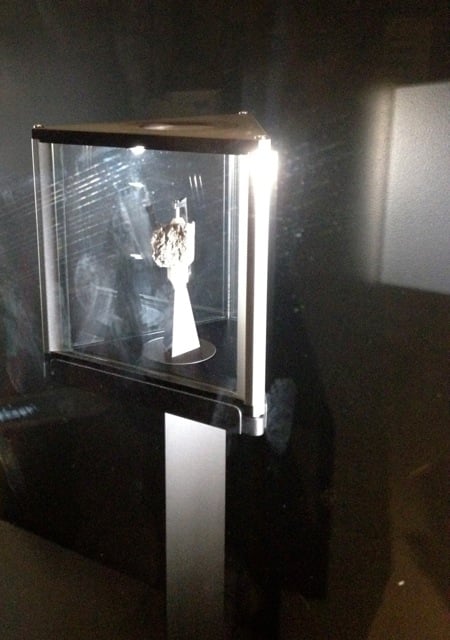I asked them to choose between the Science Museum and the Tower of London. Edie was insistent; it had to be the Science Museum. She’d been there with her class a few weeks before, and there was something she wanted the rest of us to see; a real piece of the actual moon.
We couldn’t find the piece of moon to begin with, and by the time we did, we had stopped looking. And then suddenly, there it was. Not surrounded by the usual funneling crowd, on its own, quietly inauspicious.
We are looking at a creamy grey piece of rock about the size of a fist, its rough texture glistening in the spotlight. I try to connect what we see with what is written on the information panel. I feel should be moved by what is before us - connected in some way to some big universal truth, a dawning sense of the incredible un-endingness of the space-time continuum…
"This piece of Moon rock was cut from the ‘Great Scott’ rock that Apollo 15 astronaut David Scott picked from the Moon’s surface in August 1971. The rock is made of olivine basalt and was part of an ancient lava flow, formed billions of years earlier when single-celled life had barely begun on Earth."
There are several layers of glass separating us from the fragment of rock – it’s held upright by a metal clamp with white rubber tips and is encased in a triangular prism container that’s filled with nitrogen ‘so that so that it never comes into contact with the Earth’s atmosphere’. This seems sad, so remote…
‘It would blow up if it came into contact with the earth’s air’ Edie says all of a sudden.
But it seems so inert
We press our hands against the glass as we look, and our fingerprints add to the marks already smeared onto it. And now I’m not looking at the rock, I’m looking at the glass, the fingerprints, blurred traces of the people who were here before us. The marks were made inadvertently of course, and they are meant to be invisible, a completely unintentional aspect of the museum experience, to be wiped away at the end of each day.
I thought about that sense of un-conectedness and suddenly those marks felt important; the physical trace of the visitors, the small, insignificant gestures each of us makes as we engage with an exhibit, each mark a microsite; mapping in its own way a unique and personal encounter.
I tried to explain this to Edie as we walked away, her questioning why I’d been trying to take a picture of the fingerprints as well as the rock.
‘Mum,’ she said, ‘you’re crazy’…

